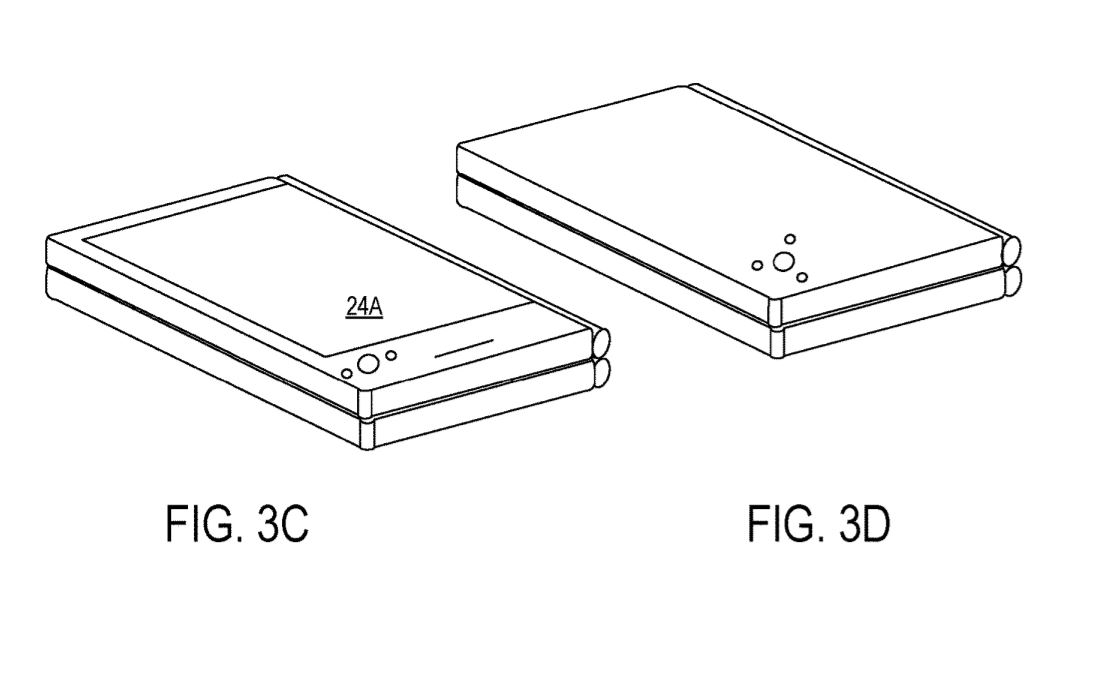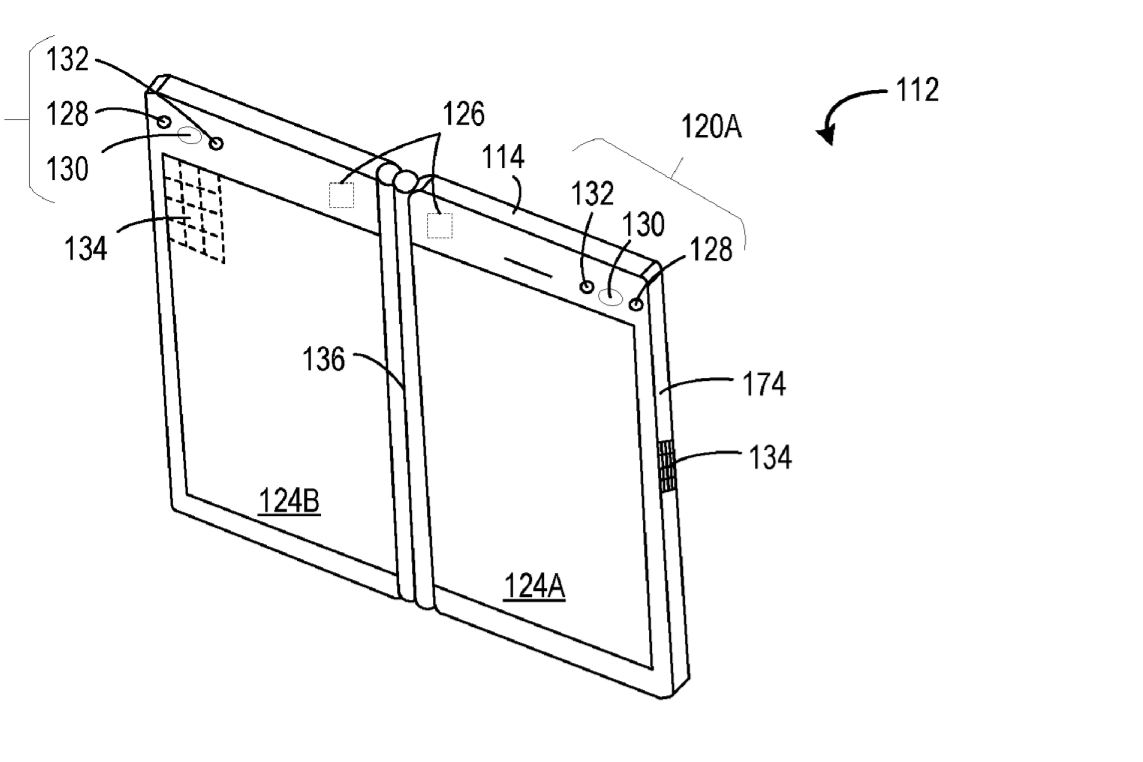There’s no doubt that Microsoft is working on a foldable dual-screen Surface device, and as time goes on, potential details about the project continue to come to light by way of government filings. In the latest, a patent reveals how users could be able to play with apps on the device — without any lag or other issues.
Originally published by the U.S. Patent and Trademark Office in November 2018, this latest patent for “Display Device Selection Based on Hardware Configuration” was recently discovered by the Windows Latest blog. The patent specifically points out that a device with dual-screen setup could feature different hardware configurations — one for each screen. This would solve any potential performance-related issues for apps, as the computing “modules” would determine configurations and transfer apps to the right screen accordingly.
This wouldn’t be new ground for Microsoft, as there are other types of hardware in the Surface lineup that are similarly complex. As a detachable 2-in-1, the Surface Book already features the CPU behind the screen and the GPU power in the keyboard in certain models. The layout of the processors in the screens of such a dual-screen device could perhaps function similarly.
“The computing system may further indicate a processor configured to receive an input including instructions to launch an application program on the first display device.” Based on the first hardware configuration, the second hardware configuration, the processor may be further configured to determine that the second hardware configuration matches the application program hardware specifications. The processor may be further configured to launch the application program on the second display device.” Microsoft explains.
As always, the technology described in patents does not always make it to a final product, but there could be hope. Recent patents have described how users could interact with the dual-screen device and provided details on the folding mechanisms, as well as information on the other technologies for the screen.
Microsoft’s dual-screen Surface, code-named Centaurus, could be released sometime in 2020. The company has not said much about the device but has privately shown off prototypes to its employees. It is rumored to be powered by a new version of Windows, code-named Windows Core OS.




